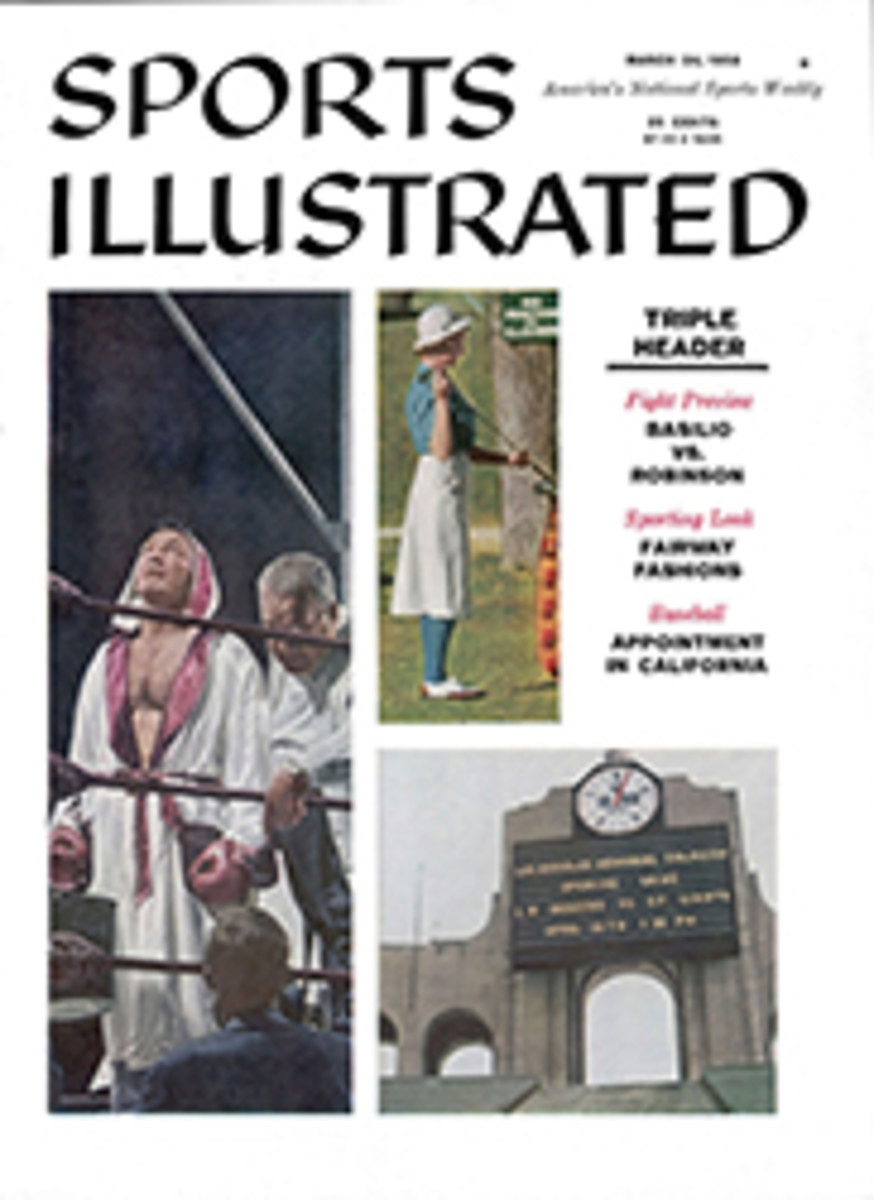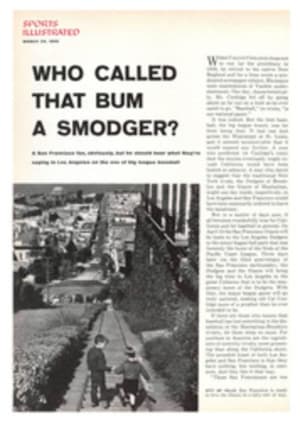
Annie Was a Lady
The "Champion Shot of the World" signaled for three glass balls to be thrown into the air, vaulted over a gun stand, grabbed a rifle, smashed all three descending targets and returned to her tent to darn her husband's socks. She was Annie Oakley, and she was one of the most charming ladies ever to invade a masculine field.
Born in 1860 in a shabby log cabin in Darke County, Ohio, Phoebe Anne Oakley Mozee, sixth of eight children, learned early about poverty, pain and a means to preserve the homestead. Her childhood is right out of an old-fashioned melodrama where the villain is easily recognized and hissed. Farmed out as hired help at the age of 9, she was cruelly exploited by a strict country couple who worked her from 4 in the morning until late at night, cooking, feeding the stock, milking cows and doing the general housework for only 50¢ a week. This experience, which could embitter a young girl's attitude toward domestic life forever, worked the opposite with Annie Oakley. She liked housekeeping and sewing as much as she liked perforating a tossed card a half a dozen times before it fluttered to the ground.
Annie's father died when she was 4, but a remembrance of him hung high above the fireplace—a 40-inch cap-and-ball Kentucky rifle. At 7, with the help of her brothers, she pulled it down from the wall and fired it. The violent kick of the butt broke her nose, but the blow never discouraged her desire to shoot. Perfect aim came naturally to her. She learned to shoot quail, pheasants and rabbits with a single shot through the head. Before she was 16 years old she was supporting her poverty-stricken family with the game she brought home and with the money she received for game she shot for a hotel in Cincinnati.
Annie was locally recognized for her fine marksmanship, but the career that brought her world fame began in Cincinnati. On a visit to see her sister she was persuaded to compete in a match with a young Irishman, Frank Butler, who earned his living by trick shooting for the vaudeville circuits. Butler made the offer to take all comers with a purse of $100 as bait. Since he was an excellent marksman, he usually collected. But even then he was no challenge for Annie. Her perfect aim won the contest, and within a year Butler was so much in love with the small dark-haired girl that he asked her to marry him. From then on they were a team, traveling from town to town performing their shooting stunts.
Annie, 5 feet tall and weighing no more than 100 pounds, from the very start charmed the customers with her youth and ladylike manners. But they gaped when they saw her skill with rifles and shotguns. This fragile creature could roll a tin can along the ground with, a tattoo of bullets from a pair of Colt double-action revolvers and slice the thin edge of a playing card at 30 paces. She could hit a dime tossed in the air, shoot from a bicycle or from a galloping horse, successfully aim looking through a mirror with her back to the target, and shoot equally well over either shoulder. With great agility she could perform a handspring and still grab a gun in time to explode a falling target before it landed.
In the early '80s, when Annie performed in St. Paul, Sitting Bull saw her and was so impressed by her fantastic marksmanship that he adopted her as his daughter, giving her the name of Little Sure Shot. Later, in the spring of 1885, Sitting Bull and the Butlers were invited to join Buffalo Bill Cody and his Original Wild West Show of some fame. In a short time Annie was its star. She shot cigarets from Butler's mouth with a .22 and she perfected a trick of hitting a ball flying at the end of a string around her husband's head. Two years later the show played at London's Earl's Court, where Annie astonished a small first-night audience by galloping in on a horse, then leaning from the saddle to snatch a pistol from the ground to shatter in rapid succession a series of flying targets. When word spread about this remarkable girl, and her prowess with rifle and pistol, the show was jammed nightly.
WHEN ROYALTY PAYS TRIBUTE
The Prince of Wales (later Edward VII), completely enamored of her, introduced her to European society. Queen Victoria commanded two private performances, and Annie won the admiration of Grand Duke Michael of Russia when she outmatched him in a contest. In Paris the King of Senegal watched her act and ran up to Buffalo Bill with 100,000 francs in his hand, offering to buy her to protect his people from the vicious lions that roamed through the countryside. In Germany the young Wilhelm Hohenzollern insisted on being part of a stunt in which Annie shot the ashes off a cigaret that he held between his lips.
At the peak of her success, Annie was a romantic heroine to thousands of men who loved her for her daring, her beauty and her spirit. They wrote her love letters; they loudly cheered the buckskinned little figure who always curtsied to them timidly at each show. The night in 1901 when Annie announced her retirement from the Wild West show, her friends protested. However, she and Butler boarded the show train for what they believed to be the last time. The train rushed toward the show's winter quarters, and then crashed headlong into another train. Four people were killed and at least a hundred were injured. Annie was pulled unconscious from the wreckage by Butler.
The result was partial paralysis. Seventeen hours after the accident her hair turned white. Two years later and after five operations, not only was Annie able to hold a gun in her hands again but remarkably she soon had regained her ability to hit coins and marbles on the fly, and finally, to repeat her wonderful trick in which she used three double-barreled shotguns to burst six balls, sprung simultaneously from traps, before they landed.
LADY IN RETIREMENT
She was soon able to travel the vaudeville circuits again, but in 1916 she decided to quit show business and retire to the Carolina Hotel at Pinehurst, N.C. Here Butler managed the skeet range and Annie gave shooting lessons to fashionable ladies. Asked why she gave up the excitement of the arena for this, she replied, "Because I made hay in the heyday of my youth, and felt that I earned a change. Why am I teaching ladies to shoot? Well, that is my pleasure for which there is no charge or compensation on my part."
During World War I Annie packed her buckskin costumes and went on the road again to Army camps around the country. She gave exhibitions with the same spirit and skill that had made her world famous. Four years after the war an automobile accident sent her back to the hospital with all the hopeless signs that she might be an invalid again. The following year, however, she broke a gun club record when she neatly picked off 98 out of 100 clay pigeons.
Annie died in 1926 in Dayton, Ohio, where she and Butler had decided to spend their old age together. Butler died, brokenhearted, 18 days later. But even before her death Annie had become a legend and a part of American folklore. Will Rogers called her "a greater character than she was a rifle shot." She had an indomitable spirit which enabled her to override poverty and hardship as a child, and the pain she suffered as a woman. Today she is still the most outstanding woman "shootiste" (as she was billed) that this country has ever seen. Actor Fred Stone wrote in his autobiography 20 years after her death, "There was never a sweeter, gentler, more lovable woman than Annie Oakley."
PHOTO
ANNIE OAKLEY AT PEAK OF HER SUCCESS

